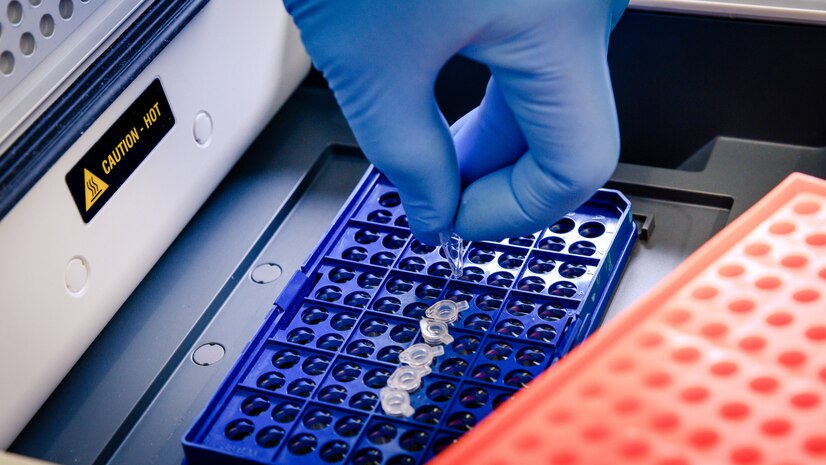- info@clueshieldforensic.com
- Open Hours: Mon - Sat 10.00 am - 7.00 pm
DNA Testing/Arson/Fire Investigations
DNA TESTING
DNA testing, also known as DNA analysis or genetic testing, is a scientific technique used to identify and analyze the genetic information contained within an individual's DNA (deoxyribonucleic acid). DNA is the molecule that carries the genetic instructions for the development, functioning, growth, and reproduction of all living organisms. It is composed of two strands that coil around each other to form a double helix structure.
DNA testing involves several steps:

- Sample Collection: The first step is to collect a sample containing DNA. This can be obtained from various sources such as saliva, blood, hair follicles, skin cells, or other bodily fluids.
- Isolation of DNA: Once the sample is collected, the DNA needs to be extracted and isolated from other cellular components. This is typically done using various chemical and mechanical methods to break open the cells and release the DNA.
- Amplification (optional): In some cases, the amount of DNA obtained from the sample may be too small for analysis. In such situations, a process called polymerase chain reaction (PCR) is used to amplify or make multiple copies of specific regions of the DNA, making it easier to analyze.
- Analysis: The isolated DNA is then analyzed using various techniques depending on the purpose of the test. Common methods include:
- Restriction Fragment Length Polymorphism (RFLP): This technique involves cutting the DNA into fragments using enzymes and then separating these fragments based on their size using gel electrophoresis.
- Polymerase Chain Reaction (PCR): PCR can be used not only for amplification but also for analyzing specific regions of the DNA by targeting them with specific primers.
- Sequencing: This method determines the exact sequence of nucleotides (the building blocks of DNA) in a DNA molecule. It can provide detailed information about genetic variations and mutations.
- Microarray Analysis:This technique involves placing single-stranded DNA fragments on a solid surface and then hybridizing them with the DNA sample to detect specific sequences.
- Next-Generation Sequencing (NGS): This is a high-throughput sequencing technology that can analyze millions of DNA fragments simultaneously, allowing for the rapid and comprehensive analysis of an individual's entire genome.
- Interpretation: The results of the DNA analysis are interpreted to provide information about various aspects such as ancestry, paternity/maternity, genetic predispositions to certain diseases, identification of genetic mutations, and forensic investigations.
DNA testing has a wide range of applications in various fields including medicine, forensic science, anthropology, genealogy, and agriculture. It has revolutionized our understanding of genetics and has become an invaluable tool in both research and practical applications.
ARSON INVESTIGATION
Arson investigation is the process of determining the cause and origin of a fire, particularly when there is suspicion of criminal activity involved. Arson is the deliberate and malicious act of setting fire to property, buildings, or land, and it is a serious crime that can result in significant damage, injury, or loss of life. Arson investigations are conducted by trained professionals, often including fire investigators, law enforcement officers, and forensic experts. Here's an overview of how arson investigations typically proceed:
- 1. Scene Assessment: The investigation begins with an assessment of the fire scene. Investigators examine the location of the fire, the extent of the damage, and any physical evidence that may be present. They look for patterns of burn, signs of accelerants (substances used to fuel fires), and any potential ignition sources.
- 2. Witness Interviews: Investigators interview witnesses who may have seen or heard anything related to the fire. Witness statements can provide valuable information about suspicious activity or individuals present before the fire started.
- 3. Physical Evidence Collection: Investigators collect physical evidence from the scene, including debris, samples of burned materials, and residues that may contain traces of accelerants. This evidence is carefully documented, packaged, and preserved for analysis in a controlled environment.
- 4. Fire Pattern Analysis: Fire investigators analyze the patterns of burn and damage to determine the origin and spread of the fire. They look for indicators such as V-shaped burn patterns (indicating the direction of fire spread) and patterns of heat damage on structural elements.
- 5. Accelerant Detection: If accelerants are suspected to have been used to start or fuel the fire, samples are collected from the scene for analysis. Techniques such as gas chromatography-mass spectrometry (GC-MS) are used to identify and analyze traces of accelerants in debris and residue samples.
- 6. Forensic Analysis: Forensic experts analyze the collected evidence, including accelerant residues, to identify any incendiary devices used and to determine the cause and manner of the fire. They may also analyze DNA evidence, if applicable, to link suspects to the scene.
- 7. Suspect Investigation: Investigators may conduct background checks and follow leads to identify potential suspects involved in the arson. This may involve surveillance, interviews, and obtaining search warrants for further evidence collection.
- 8. Legal Proceedings: If sufficient evidence is gathered to identify a suspect, they may be arrested and charged with arson. The collected evidence, witness statements, and expert testimony are presented in court during legal proceedings.
Arson investigations can be complex and challenging due to the destructive nature of fires and the potential for evidence tampering or destruction. However, thorough investigation techniques and forensic analysis play crucial roles in identifying perpetrators and bringing them to justice.
